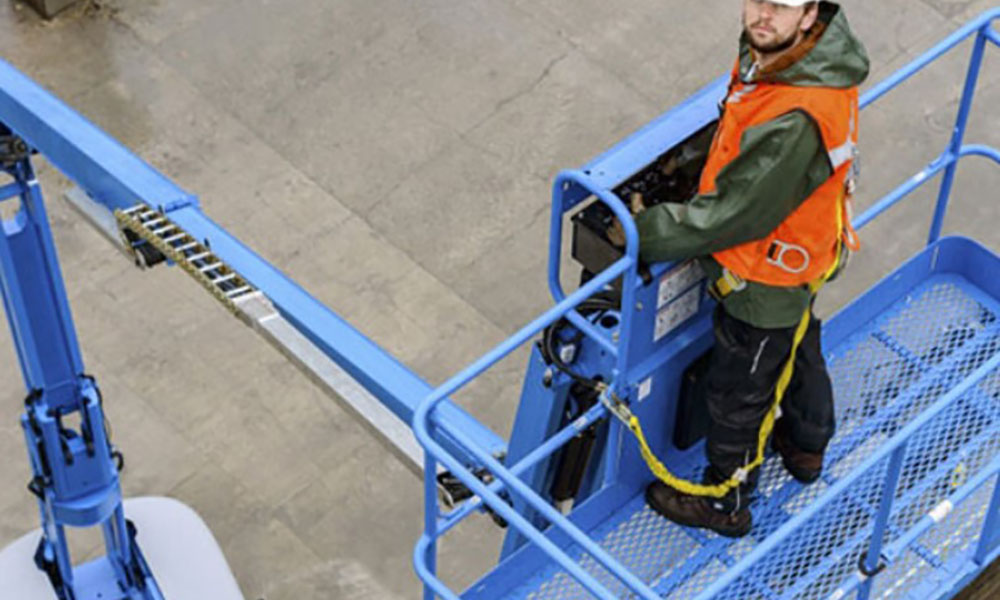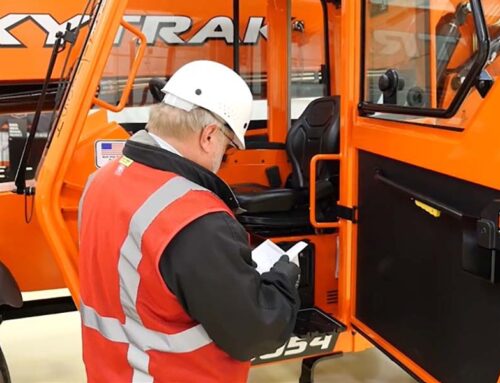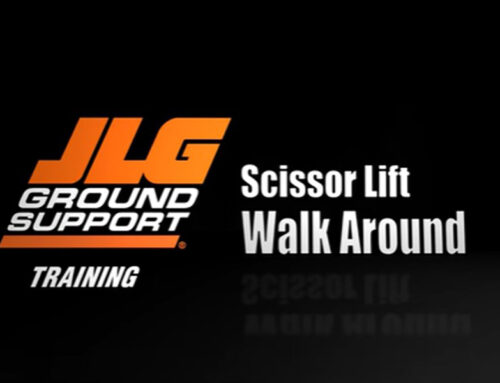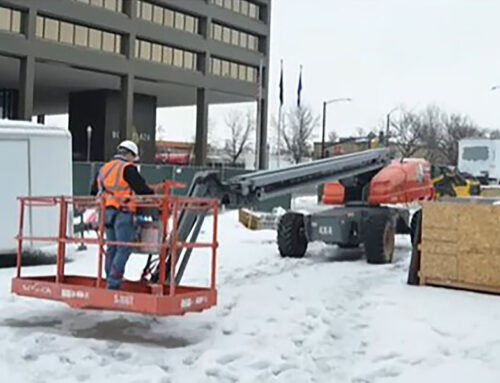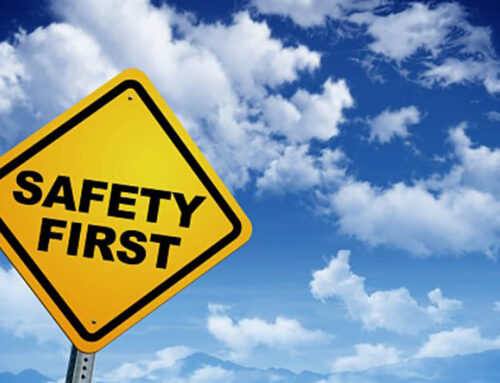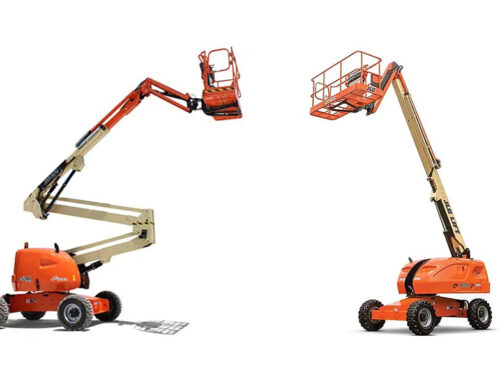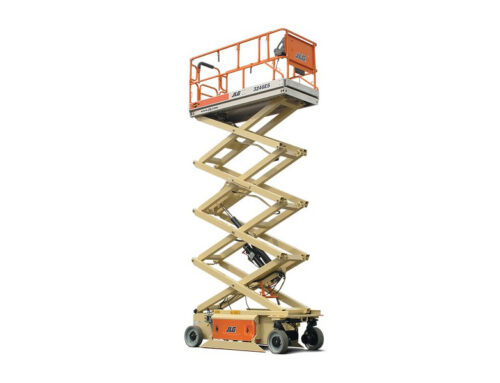SAFETY
Work in aerial lifts and elevated platforms can be inherently dangerous, and additional hazards can be introduced based on the type of tasks being performed while elevated. Recognition and control of the present hazards is crucial to assuring a safe and efficient work environment.
Hazard Assessment and Inspections:
- Site hazard assessments: Prior to beginning work, make sure that worksite conditions allow for the safe use of aerial lifts. Check for terrain conditions, obstructions, pedestrian and traffic controls, exposure to weather, electrical hazards, or other hazardous conditions.
- Pre-operation inspections: Prior to each use, operators must perform a visual inspection of the lift to assure that all components are in good working condition.
- Testing: All lift controls must be tested from all panels prior to use.
- Defective lifts: If any damage or defects are discovered during inspections or testing, the lift must be tagged and removed from service. Do not use damaged or defective lifts under any circumstances.
Common Hazards and Controls
- When mounting a lift, keep your body squared with the gate, maintain three points of contact with the lift, and do not use any control surfaces or levers as hand-holds.
- Prior to moving the lift, inspect the travel path to assure any hazards are avoided or controlled.
- When moving the lift:
- Drive slowly.
- Always face in the direction you’re travelling, and stay aware of changes in the platform’s orientation.
- Lower the platform whenever possible to increase stability.
- Do not back up the lift unless you have a clear rear view, the lift has a back-up alarm, or another employee is serving as a spotter
- Personal Protective Equipment: Appropriate PPE for working in an aerial lift typically includes a hard hat, eye protection, non-slip protective footwear, and fall protection. Make sure any additional task-specific PPE is used as required.
- Destabilizing factors: Do not exceed the lift’s rated load capacities, and avoid uneven terrain and entanglement hazards.
- Electrocution: Do not allow equipment or materials to create a conduit between an electrical structure and the aerial lift.
- Maintain minimum approach distances.
- Whenever possible, de-energize or insulate power lines. If not possible, assure that appropriate PPE or other safety gear is in use.
- Use insulated buckets and regularly inspect the insulation.
- Falls: Hazards include falling from an elevated platform, as well as ground-based personnel or equipment being struck by falling objects.
- Fall protection is required when using articulated or telescoping boom lifts including bucket trucks, and is a best practice when using a scissor lifts. Prior to use, inspect all components of harnesses and lanyards, as well as their anchor points. Only use anchor points provided or approved by the manufacturer and never tie off outside the platform. Always stay inside the basket, including arms, hands, and equipment.
- Do not strain to reach items; move the lift if something is out of reach. Keep the area under lifts clear from personnel, and assure that all personnel working around the lift is wearing appropriate PPE, including hard hats.
- Environmental hazards: Employees in aerial lifts may encounter environmental hazards such as toxic or asphyxiating gases, high winds, lightning, or storms.
- Avoid operating lifts outside in inclement weather. Aerial lifts should not to be used in high winds, refer to owner’s manual for maximum recommended wind speed.
- Limit the use of gas-powered devices indoors unless proper ventilation eliminates the risk of exposure to combustion gases.
- Do not perform tasks with equipment that may react with the environment, e.g., welding in a combustible environment. Use hazardous environment controls such as ventilation and respiratory aids where appropriate. Refer to your organization’s respiratory protection guidelines.

